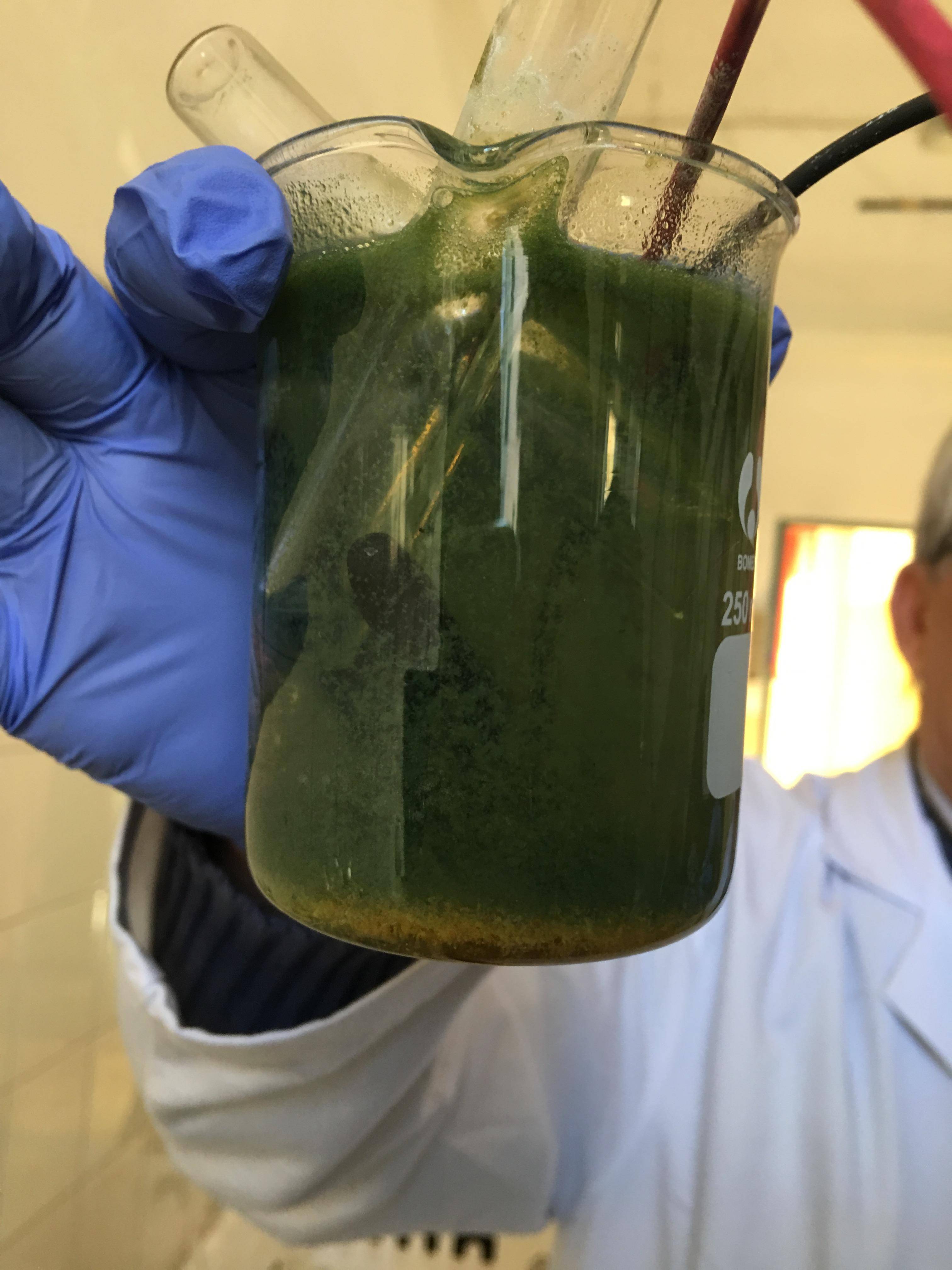Today at school we tried the electrolysis with two graphite electrodes in a sodium sulphate solution. We put the electrodes in two test tubes and filled them with some more sodium sulphate so that the solution could react with the electrodes and after that, we quickly turned them over and put them in a beaker filled with sodium sulphate. After that, we added some bromothymol blue in it to see where the hydrogen and oxygen would have gone. Afterwards, we turned the power on and saw that it was producing gas and everything was normal at first (1st image).
Some time after that we didn't see the volumes between the two test tubes changing so we waited some more. Later, we saw that the solution started assuming a green color and something started forming on the surface (2nd image).
It became more and more green so we decided to turn the power off. Then we noticed that on the bottom of the beaker was something yellowish and brownish (3rd image). We checked if the wires were consumed by the solution or if they had reacted with it but nothing was wrong with them. I have no idea what it is and my teacher told me and my lab group to find an explanation to that. What is the problem here?
List of the materials used:
- 1 beaker
- 2 test tubes
- two electrodes connected to wires (graphite)
- $\ce{Na2SO4}$ (sodium sulphate)
- bromothymol blue



